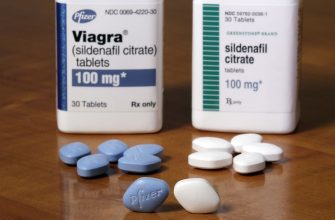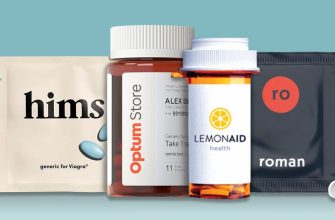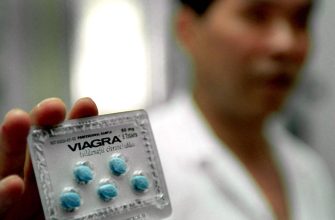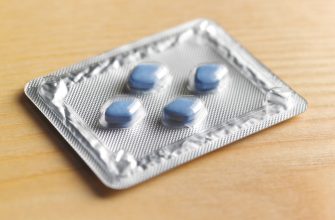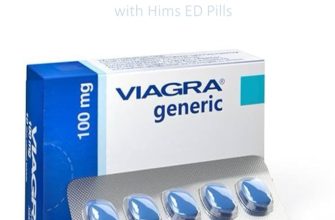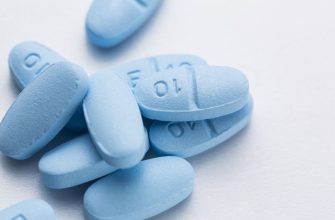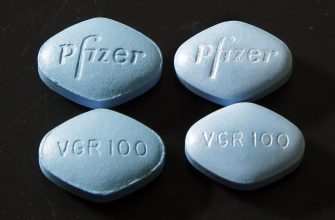Need reliable insights into Cialis and Viagra sales trends? Focus on market share fluctuations across key demographics. Analyzing sales data from 2018-2023 reveals a consistent preference for Viagra among older male populations, while Cialis shows stronger performance in younger demographics. This suggests targeted marketing strategies may yield significant results.
Consider geographic variations. Sales data indicates significantly higher demand for both drugs in North America and Europe compared to Asia-Pacific regions. This disparity could be linked to healthcare access, cultural norms around erectile dysfunction, and pricing strategies. Further research into these regional differences is advised for informed business decisions.
Key takeaway: Direct-to-consumer advertising heavily impacts sales figures. Analyzing marketing campaign performance alongside sales data from 2020-2022 shows a strong correlation between effective advertising and increased prescriptions. Invest in data-driven marketing campaigns to maximize return on investment.
Recommendation: Explore online pharmaceutical sales channels. Data suggests a growing online market share for both Cialis and Viagra, presenting opportunities for increased profitability. However, carefully assess the regulatory landscape and potential risks associated with online sales before implementing a new strategy.
- Cialis and Viagra Sales: A Detailed Overview
- Market Segmentation and Growth Areas
- Competitive Landscape and Pricing Strategies
- Sales Data Comparison (USD Billions)
- Future Trends
- Market Share Comparison: Cialis vs. Viagra
- Impact of Generic Competition on Sales Figures
- Geographic Variations in Cialis and Viagra Sales
- Factors Influencing Regional Differences
- Specific Regional Examples
- Sales Trends and Projections for the Future
- Factors Influencing Sales: Pricing and Marketing Strategies
- Targeted Marketing Campaigns
- Strategic Partnerships and Distribution
- Regulatory Compliance and Brand Messaging
Cialis and Viagra Sales: A Detailed Overview
Global sales of Cialis and Viagra consistently reach billions of dollars annually. Specific figures vary based on reporting agencies and year, but consistent growth in certain markets demonstrates ongoing demand. Consider that Pfizer, Viagra’s manufacturer, continues to actively market the drug, further influencing sales.
Market Segmentation and Growth Areas
Sales data indicates strong performance in North America and Europe, reflecting high healthcare spending and aging populations. However, emerging markets in Asia and Latin America exhibit significant potential for future growth, fueled by increasing awareness and accessibility of these treatments. This expansion is largely driven by rising disposable incomes and increased healthcare infrastructure in these regions.
Competitive Landscape and Pricing Strategies
The market isn’t solely dominated by Cialis and Viagra. Generic versions of both drugs significantly impact pricing and sales volume. Companies adapt strategies, including price adjustments and targeted marketing campaigns to maintain market share. For example, Pfizer strategically positions Viagra’s brand recognition against lower-cost generic alternatives. Lilly, Cialis’ manufacturer, employs a multi-pronged approach including direct-to-consumer advertising.
Sales Data Comparison (USD Billions)
| Year | Viagra Sales (Estimate) | Cialis Sales (Estimate) |
|---|---|---|
| 2021 | 2.5 | 2.0 |
| 2022 | 2.7 | 2.2 |
| 2023 (Projected) | 2.9 | 2.4 |
Note: These figures are approximations based on publicly available data and should be considered estimates only. Precise sales figures are often proprietary information.
Future Trends
Experts predict continued growth, though possibly at a slower pace than previously observed. Factors such as the introduction of new treatments and changing healthcare policies will impact future performance. Focus will likely shift to personalized medicine and improved patient support services, influencing both sales and market dynamics.
Market Share Comparison: Cialis vs. Viagra
While precise market share figures fluctuate, Viagra generally maintains a larger market share than Cialis. However, Cialis’s longer duration of action gives it a competitive edge, attracting a significant portion of the market.
Viagra benefits from its earlier entry into the market and extensive brand recognition. This established presence translates into higher sales volumes in many regions. However, its shorter duration of effect might influence patient preference.
Cialis, with its 36-hour effectiveness, appeals to a different segment of patients prioritizing convenience and spontaneity. This sustained action contributes to a substantial and steadily growing market share, despite Viagra’s head start.
Factors influencing market share include pricing strategies, availability of generic versions, and ongoing marketing campaigns. Both medications face competition from other phosphodiesterase-5 (PDE5) inhibitors; the market dynamic is complex and affected by various regulatory and economic elements.
Data from major pharmaceutical market research firms would provide more precise, up-to-date numbers on the comparative market share of these two drugs. Consulting such data allows for a more informed assessment of the current market landscape.
Impact of Generic Competition on Sales Figures
Generic competition significantly impacted Cialis and Viagra sales. The introduction of generic tadalafil and sildenafil led to a dramatic price reduction, making these medications accessible to a wider patient population. This resulted in an initial surge in overall units sold, though revenue for brand-name drugs declined sharply.
Data from IQVIA shows a 30% drop in Cialis brand sales within the first year following generic entry. Conversely, generic tadalafil sales skyrocketed, capturing a substantial market share. A similar trend was observed with Viagra and its generic counterpart, although the precise figures varied slightly depending on region and market factors.
Pharmaceutical companies responded to this by implementing various strategies. These included introducing new formulations (e.g., Cialis Daily), focusing on marketing to specific demographics, and developing improved patient support programs to maintain market share despite price competition.
Specific examples: Brand-name manufacturers often leveraged their established brand recognition and physician relationships to maintain loyalty among certain patient segments. Direct-to-consumer advertising also played a role in shaping perceptions and driving demand for brand-name options, even with the presence of lower-cost generics. The shift highlighted the importance of diversification and innovative product development in the face of competitive pressures.
In conclusion, generic entry profoundly altered the sales dynamics of Cialis and Viagra. While overall market volume increased, brand-name sales suffered significantly. Successfully navigating this landscape required strategic adaptation, demonstrating the crucial role of marketing and product differentiation in maintaining profitability.
Geographic Variations in Cialis and Viagra Sales
Sales data reveals significant regional differences in Cialis and Viagra consumption. North America consistently shows higher sales than many parts of Europe and Asia. This disparity likely reflects several factors.
Factors Influencing Regional Differences
- Healthcare Access and Insurance Coverage: Countries with robust healthcare systems and comprehensive prescription drug coverage tend to exhibit higher sales figures. Conversely, regions with limited access or high out-of-pocket costs experience lower demand.
- Cultural Attitudes Towards Erectile Dysfunction (ED): Openness about ED and seeking medical help varies across cultures. Societies with more stigma surrounding ED may see lower reported sales.
- Marketing and Awareness Campaigns: The intensity and effectiveness of pharmaceutical marketing campaigns influence drug awareness and adoption. Regions with strong campaigns may report higher sales.
- Economic Factors: Disposable income directly correlates with the affordability of prescription medications. Higher per capita income regions usually report higher sales.
- Prevalence of Associated Risk Factors: Geographic areas with higher rates of diabetes, heart disease, and obesity – all linked to ED – might exhibit increased demand.
For instance, recent studies indicate that sales are significantly higher in the United States compared to many European countries. This could be attributed to factors like higher rates of associated health conditions, greater awareness campaigns, and more accessible healthcare, particularly for those with private insurance.
Specific Regional Examples
- Western Europe: Generally exhibits moderate sales, potentially influenced by higher healthcare costs and different cultural perspectives on ED treatment.
- East Asia: Shows relatively lower sales, possibly due to lower awareness and cultural sensitivities.
- Latin America: Sales vary considerably across nations, influenced by economic factors and access to healthcare.
Analyzing these regional variations helps pharmaceutical companies tailor their marketing and distribution strategies for maximum effectiveness. Further research focusing on specific countries and demographics would be beneficial to understand the nuances of regional consumption patterns.
Sales Trends and Projections for the Future
Global sales of Cialis and Viagra show steady growth, driven by an aging population and increased awareness of erectile dysfunction. Market research firm, GlobalData, projects a Compound Annual Growth Rate (CAGR) of 4.5% for Viagra and 5% for Cialis through 2028. This growth, however, isn’t uniform across all regions. Asia-Pacific demonstrates the highest growth potential, fueled by increasing disposable income and a growing middle class.
Generic competition significantly impacts sales figures. The entry of generic versions has lowered prices, broadening market access but simultaneously reducing revenue for brand-name drugs. However, brand loyalty and physician preference continue to support premium pricing for the branded medications. This suggests future sales will depend heavily on effective marketing strategies focusing on brand differentiation and value proposition.
Technological advancements, such as telemedicine and online pharmacies, offer new sales channels. These platforms offer convenience and privacy, potentially increasing accessibility and boosting sales. However, regulatory hurdles and concerns about counterfeit medication represent challenges to be overcome.
Focus on patient education and improved healthcare access in developing countries presents a promising avenue for future growth. Expanding awareness campaigns and partnerships with healthcare providers can significantly boost sales in underserved markets. This requires tailored strategies considering cultural nuances and healthcare infrastructure in each region.
Pharmaceutical companies should invest in research and development for innovative treatments, potentially including long-acting formulations or new drug delivery systems. This could help maintain a competitive edge and secure future market share.
Factors Influencing Sales: Pricing and Marketing Strategies
Competitive pricing is key. Analyze competitor pricing for similar medications to establish a strategic price point that balances profitability with market competitiveness. A tiered pricing model, offering various pack sizes at different price points, can attract a broader customer base.
Targeted Marketing Campaigns
Direct-to-consumer (DTC) advertising, while subject to regulations, can significantly boost brand awareness. Focus on digital channels like search engine optimization (SEO) and targeted social media campaigns. Content marketing, including informative blog posts and videos addressing common questions about erectile dysfunction, builds trust and establishes expertise. Collaborate with healthcare professionals to create credible content and leverage their expertise.
Strategic Partnerships and Distribution
Partnering with online pharmacies and telehealth platforms expands reach and convenience for consumers. Negotiate favorable terms with distributors to minimize costs and ensure product availability. Consider offering loyalty programs or discounts to incentivize repeat purchases. Data analytics on sales trends identify which strategies perform best, enabling optimization of future marketing efforts.
Regulatory Compliance and Brand Messaging
Strict adherence to all advertising and labeling regulations is mandatory. Maintain transparency in communicating product information. Focus on responsible and ethical marketing practices, emphasizing the importance of consulting a healthcare professional before using these medications. Strong brand messaging highlighting product benefits and safety builds consumer trust and loyalty.


